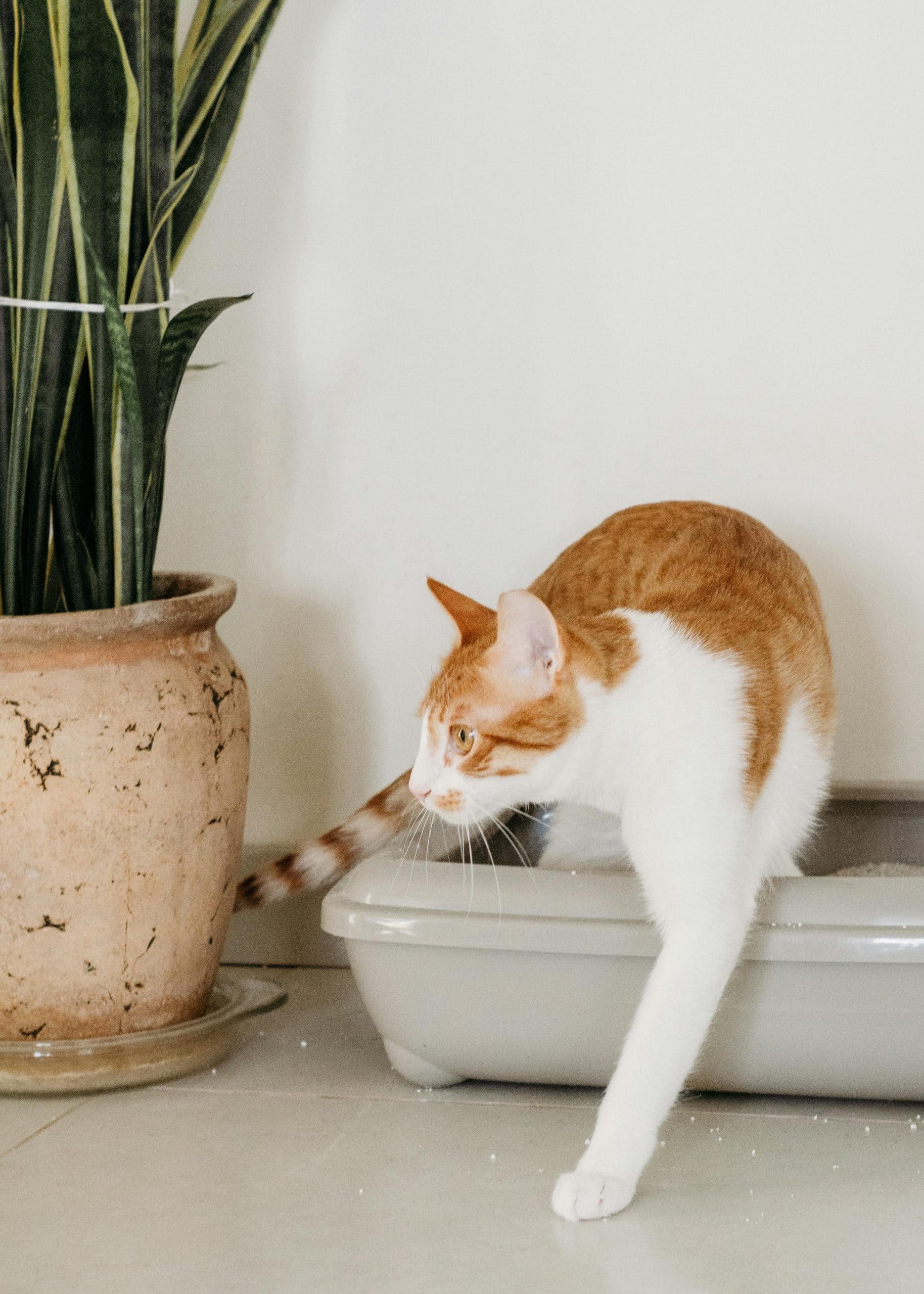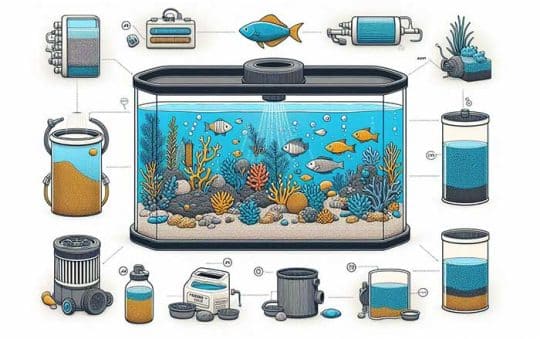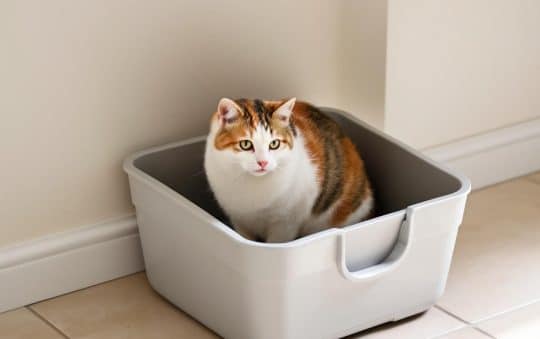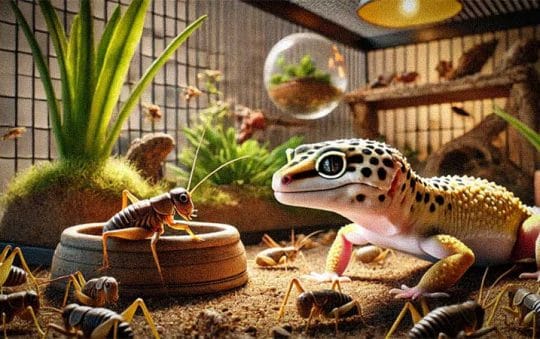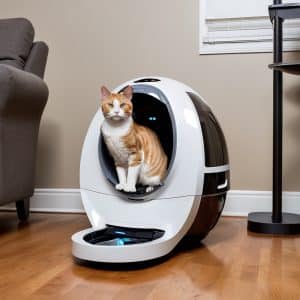
In this comprehensive guide, we’ll explore everything you need to know about selecting the perfect litter for your automatic cleaning system. Furthermore, we’ll examine the critical properties that make certain litters ideal for automated boxes while explaining why others should be avoided entirely.
Why Choosing the Right Litter for an Automatic Litter Box Matters
First of all, automatic litter boxes operate using various mechanisms – from raking and sifting to rotating and flushing systems. Consequently, each design works best with specific types of litter. Moreover, using inappropriate litter can cause several problems:
- Sensor interference: Some automatic boxes use weight or moisture sensors that can be affected by certain litter types
- Mechanical jams: Litter that clumps too hard or too soft can cause rakes or sifting mechanisms to clog
- Tracking issues: Lightweight litters may scatter more easily around your home
- Odor control failures: Insufficient odor-absorbing properties can make the automatic cleaning less effective
Therefore, matching your litter type to your specific automatic box model is crucial for optimal performance. Subsequently, this ensures your investment continues working efficiently while maintaining a comfortable environment for your cat.
Essential Properties When Choosing Litter for Automatic Litter Boxes
When evaluating litter options for your automatic box, several key properties determine compatibility and performance. Above all, understanding these characteristics will help you narrow down your choices:
Clumping Quality
For automatic boxes with raking or sifting mechanisms, clumping quality is paramount. However, a delicate balance is required:
- Medium-firm clumps: Litter should form solid clumps that maintain integrity when moved, yet aren’t so hard they stick to the bottom
- Quick clumping action: Rapid clumping ensures waste is solidified before the cleaning cycle begins
- Minimal crumbling: Clumps that break apart easily can slip through cleaning mechanisms and contaminate clean litter
Granule Size and Weight
The physical properties of litter granules significantly impact automatic system performance. In addition, they affect how well the litter stays contained:
- Medium-sized granules: Too small and they may jam mechanisms; too large and they may not clump effectively
- Moderate weight: Granules should be heavy enough to resist tracking but not so heavy they strain the motor
- Uniform texture: Consistent granule size helps ensure reliable sifting and separation
Different Types of Litter and Their Compatibility with Automatic Systems
Not all litter types perform equally in automatic boxes. As a result, understanding the strengths and limitations of each category is essential when choosing the right litter for an automatic litter box:
Clumping Clay Litter
Traditionally, clay-based clumping litters have been the most widely compatible option for automatic systems. Therefore, they remain popular for several reasons:
- Pros: Forms solid clumps, activates quickly, available in various formulations, familiar to most cats
- Cons: Can be dusty, heavier than alternatives, some cats dislike the texture
- Best for: Raking and sifting automatic systems
Silica Crystal Litter
Crystal litters absorb moisture and trap odors differently than clumping varieties. Nevertheless, they work exceptionally well in certain automatic systems:
- Pros: Excellent moisture absorption, superior odor control, lightweight, low tracking
- Cons: Doesn’t clump, more expensive, some cats dislike the texture
- Best for: Rotating or specialized crystal-specific automatic boxes
Natural and Biodegradable Options
Eco-friendly litters made from materials like corn, wheat, pine, or paper offer environmental benefits. However, they present unique challenges in automatic systems:
- Pros: Biodegradable, often less dust, renewable resources, lighter weight
- Cons: Variable clumping quality, may stick to mechanisms, often less effective in humidity
- Best for: Specialized automatic boxes designed for alternative litters
Obviously, the best choice depends on both your specific automatic box model and your cat’s preferences. Consequently, you may need to experiment with several options before finding the perfect match.
Common Challenges When Selecting Litter for Automatic Litter Boxes
Even when choosing the right litter for an automatic litter box, you might encounter these common issues:
Balancing Cat Preferences with Machine Requirements
Cats can be notoriously particular about their litter. Meanwhile, your automatic box has specific requirements for optimal operation. Therefore, finding the intersection of both needs is critical:
- Gradual transitions: Mix new litter with old over 1-2 weeks to help your cat adjust
- Texture considerations: Some cats strongly prefer finer or coarser textures regardless of what works best in the machine
- Scent sensitivity: Many cats dislike strongly scented litters, even if they help with odor control
Dust and Tracking Issues
Automatic boxes often have more exposed mechanisms than traditional boxes. Subsequently, dust and tracking become more significant considerations:
- Low-dust formulations: Dust can settle on sensors and moving parts, potentially causing malfunction
- Anti-tracking properties: Litter scattered outside the box can get into mechanical components
- Mat compatibility: Consider how well the litter works with tracking mats placed around the box
How to Test Litter Compatibility with Your Automatic System
Before committing to a large quantity of a new litter, follow these steps to test compatibility:
Start Small and Observe
Beginning with a small amount allows you to evaluate performance without wasting resources. Accordingly, follow this process:
- Purchase the smallest available package of your candidate litter
- Fill your automatic box according to manufacturer recommendations
- Observe several complete cleaning cycles without cat use
- Look for smooth operation with no jamming, sticking, or unusual noises
- Then introduce your cat to the new setup and monitor their reaction
Evaluate Multiple Performance Factors
A comprehensive evaluation considers both mechanical performance and practical factors. Furthermore, this ensures you’re assessing all relevant aspects:
- Cleaning efficiency: How thoroughly does the system remove waste with this litter?
- Odor control: Does the litter effectively control odors between cleaning cycles?
- Dust levels: Is there visible dust accumulation on the mechanism or surrounding areas?
- Tracking patterns: How far does this litter spread beyond the box?
- Cat acceptance: Does your cat use the box without hesitation?
Maintenance Tips When Using the Right Litter for Your Automatic Box
Even with the perfect litter match, proper maintenance ensures optimal performance. Undoubtedly, following these practices will extend your system’s lifespan:
Regular Partial Litter Replacement
Automatic boxes still require some manual maintenance. In contrast to traditional boxes, however, the process is simplified:
- Add fresh litter regularly to maintain the optimal fill level
- Every 2-3 weeks, empty and refill the litter chamber completely
- Clean the waste receptacle according to manufacturer guidelines
Monitor and Clean Sensors
Many automatic systems rely on sensors to detect your cat or waste deposits. As a result, keeping these components clean is essential:
- Check for dust accumulation on sensor surfaces weekly
- Gently clean sensors with a dry cloth or according to manual instructions
- Ensure nothing obstructs the sensor’s field of detection
Making the Final Decision: Choosing the Right Litter for an Automatic Litter Box
When finalizing your litter selection, consider these decisive factors:
Prioritize Manufacturer Recommendations
Most automatic litter box manufacturers provide specific guidance about compatible litter types. Therefore, these recommendations should be your starting point:
- Review your user manual for litter specifications
- Check the manufacturer’s website for updated recommendations
- Consider reaching out to customer service for personalized advice
Balance Cost and Performance
Premium litters often perform better in automatic systems. Nevertheless, budget considerations are also important:
- Calculate the true monthly cost based on how frequently you’ll need to replace litter
- Consider the potential cost of repairs if using incompatible litter damages your system
- Factor in the convenience value of reduced maintenance time
Finally, remember that your cat’s preferences should never be ignored. In fact, the most technically compatible litter is worthless if your cat refuses to use it.
Conclusion: Successful Automatic Litter Box Ownership Depends on the Right Litter
Choosing the right litter for an automatic litter box involves balancing multiple factors – from mechanical compatibility to your cat’s preferences and your household needs. Above all, the perfect match ensures your automatic system operates efficiently while keeping your feline friend happy.
Initially, you may need to experiment with several options before finding your ideal solution. However, the time invested in finding the right litter will pay dividends through reliable operation, reduced maintenance, and a cleaner home environment.
Remember that as your cat ages or if you add new cats to your household, their litter preferences may change. Therefore, remain flexible and willing to reassess your litter choice periodically.
By following the guidance in this article, you’re well-equipped to make an informed decision about the best litter for your automatic system. Consequently, both you and your cat will enjoy the benefits of this modern pet care convenience for years to come.
